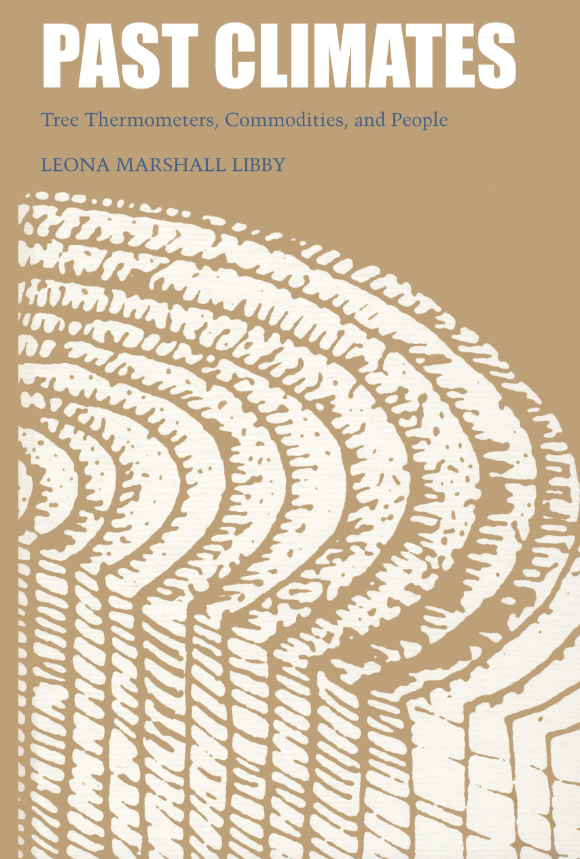Past Climates: Tree Thermometers, Commodities, and People by Leona Marshall Libby

Principles
The onset of testing of hydrogen bombs in the atmosphere led to
an understanding of isotope fractionation in the water vapor that
distills from the ocean surfaces throughout the world. This information
derived from the establishment of a global network of 155
collecting stations in sixty-five countries, beginning in 1953 and continuing
to the present, by the International Atomic Energy Agency
and the World Meteorological Organization. Monthly meteorological data
(amount of precipitation and temperature) were reported,
and monthly samples of precipitation were measured for tritium,
deuterium to hydrogen ratio, and oxygen-18 to oxygen-16 ratio
(IAEA 1953-1971).
The measured ratios are expressed as δD and δ18:
D = [((D/H)s - (D/HU / (D/HU × 103
ppt (1)
18= [((180/160)s - (180/160)std / (180/160)std × l03
ppt (2)
where subscript s refers to the sample, subscript std refers to standard
mean ocean water (SMOW), and ppt means parts per thousand.
The error of measurement of δD is about 2 ppt; of δ18 it is about
0.2 ppt. The plot of world data from 1953 to 1963, of δD versus δ18
(fig. 1-1), shows that all the measurements for terrestrial surface waters
lie on a line with a slope of 8 characterizing Rayleigh distillation
of water vapor from the sea surface to form atmospheric precipitation.
This plot with its slope of 8 was originally demonstrated by
Harmon Craig (1961, 1963) and by W. Dansgaard (1964). The line is
expressed by the relation δD = 8δ18 + constant, where the slope of 8
can readily be computed from the measured temperature coefficients for
((D/H)liquid / (D/H)vapor) and for ((180/160)liquid / (180/160)vapor)
(Stewart and Friedman 1975).
Rayleigh distillation, a process in which the condensate is immediately
removed from the vapor after formation (by fallout of rain
and snow in the meteorological case), leads to a higher fractionation
than processes which occur at equilibrium, due to kinetic effects
which are not theoretically understood, so that it has not yet been
possible to compute the value 8 from first principles. To each point
on the line of figure 1-1 there corresponds a temperature of distillation
(figs. 1-2 and 1-3).
In figure 1-1, the points at very large isotope depletions (δD =
-300 ppt and δ18 = -40 ppt) have been measured in very cold ice
from the bottom of the Antarctic ice cap, laid down in ice ages.
Points at small depletions (δD = 0 ppt and δ18 = 0 ppt) have been
Past Climates: Tree Thermometers, Commodities, and People by Leona Marshall Libby




